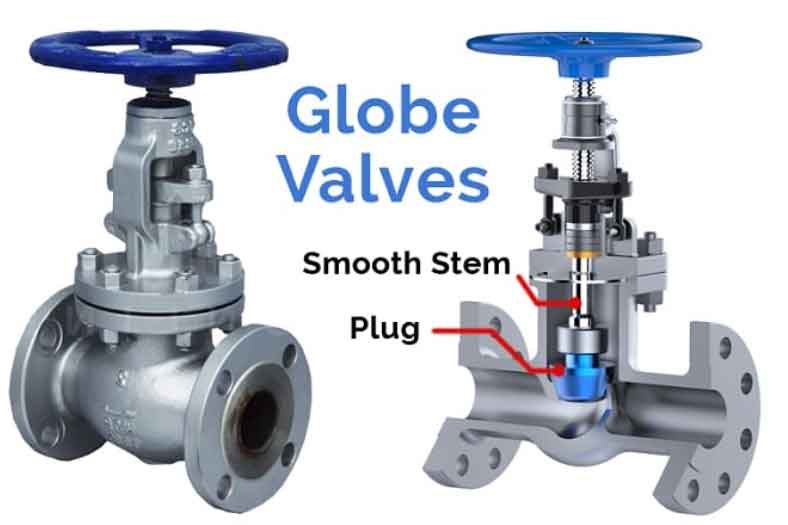Globe valves are widely used in fluid control systems for their precise flow control capabilities. They are named after their globe-like shape, with a movable disc (plug) that regulates the flow of fluid through the valve. Let’s explore the mechanics, advantages, and applications of globe valves in more detail:

Functionality: Globe valves operate by lifting or lowering the disc (plug) to control the flow of fluid. The disc is connected to a stem, which can be operated manually or automatically using actuators. When the stem is turned or actuated, the disc moves linearly, either opening or closing the flow passage. This linear motion allows for precise throttling and regulation of fluid flow, making globe valves suitable for applications requiring accurate control.
Globe valves also feature a stationary ring seat surrounding the disc. When the disc is fully lowered, it comes in contact with the seat, forming a tight seal and preventing fluid leakage. This shut-off capability of globe valves is advantageous in situations where complete isolation of the flow is necessary.
Advantages:
- Precise Flow Control: Globe valves offer excellent control over fluid flow due to their linear motion design. They can be used for both throttling and on/off applications, allowing for precise adjustment of flow rates.
- Excellent Shut-Off Capability: Globe valves provide a reliable shut-off function when fully closed, minimizing the risk of leakage and ensuring system integrity.
- Versatility: Globe valves can handle a wide range of fluids, including liquids, gases, and even slurries. They are suitable for various industries and applications.
- Pressure and Temperature Compatibility: Globe valves can withstand high pressures and temperatures, making them suitable for demanding environments.
- Flexibility in Installation: Globe valves can be installed in any orientation, offering flexibility in system design and installation.
Applications:
- HVAC Systems: Globe valves are commonly used in heating, ventilation, and air conditioning systems for controlling the flow of water or steam in temperature regulation.
- Process Industries: Globe valves find extensive application in process industries such as chemical, petrochemical, and pharmaceutical, where precise flow control is essential for manufacturing processes.
- Power Generation: Globe valves are used in power plants for controlling the flow of steam, condensate, and other fluids in boilers, turbines, and heat exchangers.
- Oil and Gas Industry: Globe valves play a crucial role in oil and gas processing and transportation systems, where they control the flow of crude oil, natural gas, and petroleum products.
- Water Treatment: Globe valves are commonly employed in water treatment plants for regulating the flow of water in filtration, disinfection, and distribution processes.
- Marine Applications: Globe valves are used in marine systems, including shipbuilding and offshore industries, for various applications such as cooling water systems, ballast systems, and fuel systems.
- Refining Industry: Globe valves are essential in refining processes, where they control the flow of liquids, gases, and other hydrocarbon products in different refining stages.
The selection of globe valves depends on factors such as pressure ratings, temperature ranges, material compatibility, and flow characteristics specific to the application. Consulting with valve manufacturers or industry experts can help in choosing the most suitable globe valve for a particular system and its intended purpose.
